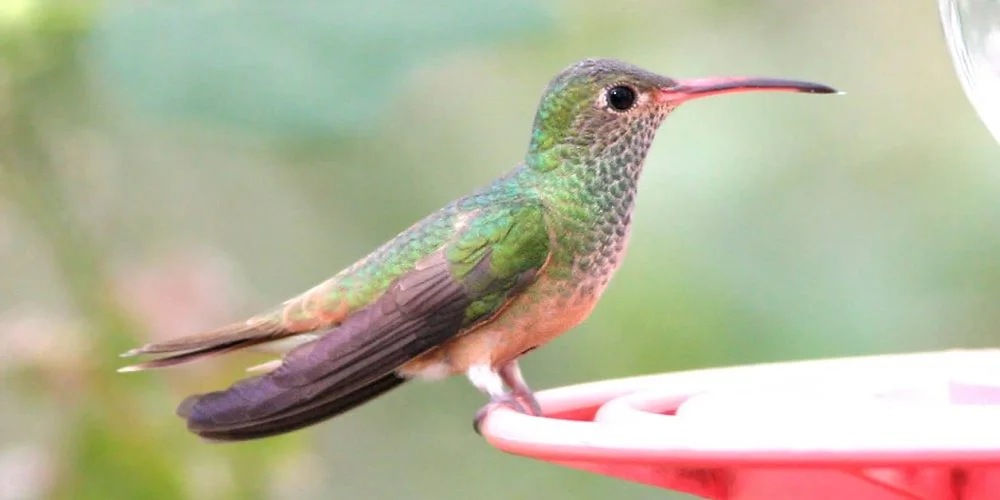
In Georgia, there are nine different species of hummingbird that you may encounter.
These are:
- Green-Breasted Mango
- Ruby-throated Hummingbird
- Black-Chinned Hummingbird
- Broad-Tailed Hummingbird
- Rufous Hummingbird
- Allen’s Hummingbird
- Calliope Hummingbird
- Broad-Billed Hummingbird
- Buff-Bellied Hummingbird
Want to learn more? Take a look at the Compete Hummingbird Guide Book – a classic!
The Ruby-throated Hummingbird is the most common of these birds in Georgia and is currently the only known species to make nests in the state and stay there year-round.
Georgia is a southern state with a sub-tropical climate and humid, often hot, weather.
There are 50 different state parks across Georgia and there are 12 different national parks.
Hummingbirds are small birds that are quite difficult to spot on lots of bird watching trails as they are usually spotted visiting gardens.
Now that we’ve looked at what hummingbirds can be found in the state of Georgia, let’s have a look at each of these individual species in more detail.
Take a look at our article on the Best Hummingbird Feeder!
What Hummingbirds can be seen in Georgia?
Table of Contents
1. Ruby-throated Hummingbird
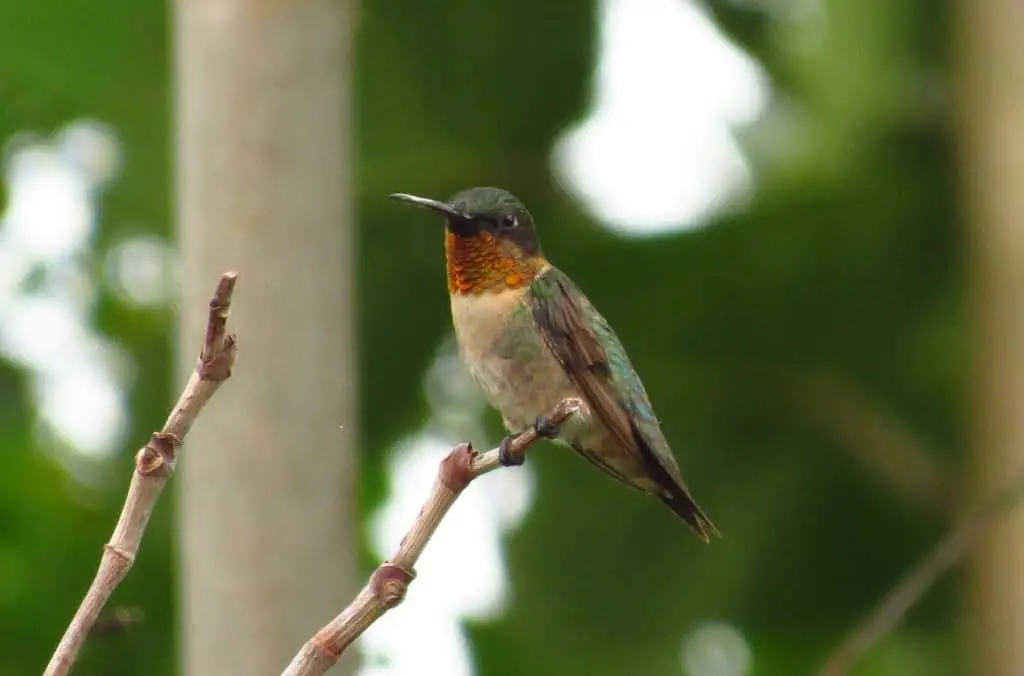
Fun Facts:
- These hummingbirds feed on nectar, particularly the nectar of both orange and red tubular plants such as honeysuckle.
- These birds are tiny and only weigh 2-6g with their wingspan being 8-11cm.
This bird got its name from the bright red feathers that cover the necks of the males, females do not have this colouring and instead have full white bellies and necks.
These birds do not form breeding pairs and males will mate with any female that enters their territory.
Males are defensive of these territories and you are most likely to see them in open country areas such as meadows.
Their courtship displays involve a series of aerial dives of up to 50ft, they will perform smaller dives closer to the female as well.
This is the only species of hummingbird that is known to breed across the whole state of Georgia.
Whilst they are present year-round, the are most abundant during breeding seasons as this is when they are most active.
These birds will visit gardens and are big fans of brightly coloured tubular plants, adding these to your garden will greatly increase your chances of a visitor.
2. Black-chinned Hummingbird
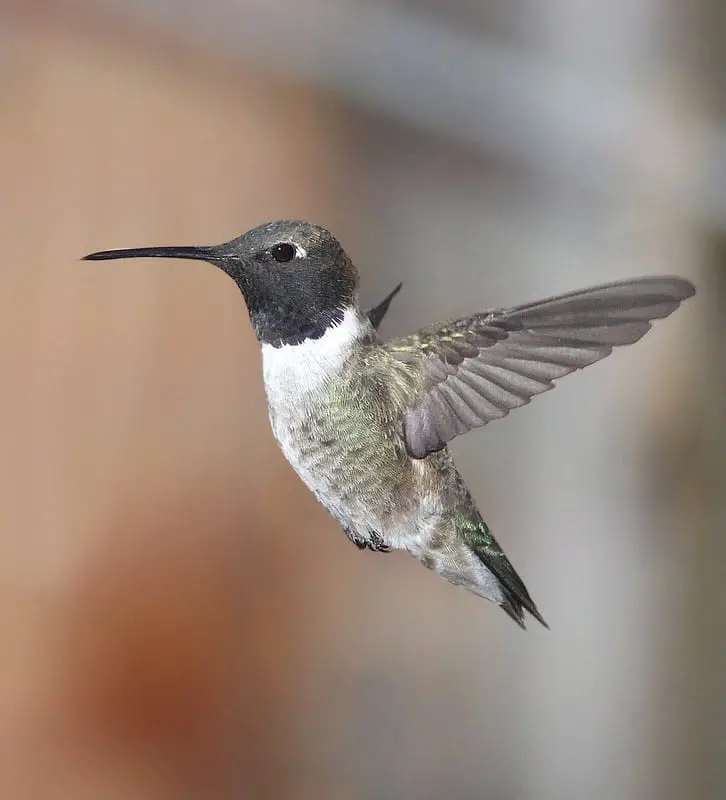
Fun Facts:
- They most commonly consume nectar from flowers but will also eat insects when they are more readily available.
- These birds are very small with a weight range of 2.3-4.9g and have an average wingspan of 11cm.
The males of this species have black and purple feathers covering their necks and head, which is how they got their name.
Both males and females have bright white bellies. You are most likely to see this bird close to riversides either on high up perches or soaring above their territory.
Whilst not a lot is known about this species of hummingbird, it is known that they are not monogamous and do not appear to form breeding pairs.
Females will be the ones to make a nest and will raise their young on their own.
These birds are not common residents of Georgia but have been known to pass through the state on their migrations.
These sightings are usually to the south or in the centre of the state and they have increased in recent years.
To try and attract one to your garden you should use tubular plants and also sugar water feeders as they do not seem to have any issue with using man made feeders.
3. Broad-tailed Hummingbird
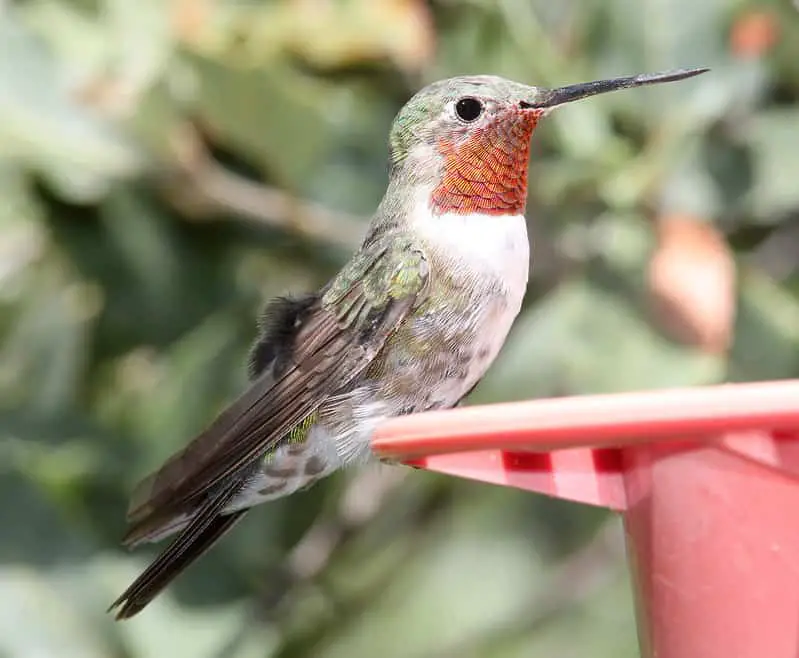
Fun Facts:
- These birds will feed on an even distribution of nectar and insects, mothers will feed insects to their newly hatched young.
- These birds are medium sized for hummingbirds and weigh 2.8-4.5g.
These hummingbirds, rather unsurprisingly, got their names from their broad and thick tails.
Males of this species are identifiable by their iridescent pink throats and both sexes are covered in mostly green feathers.
Broad-tailed hummingbirds have the ability to go into torpor, a form of mini hibernation that slows their heart rate and energy consumption when they cannot find enough food.
These birds are not monogamous and males with mate with several individuals where possible, this is their only contribution to fatherhood.
There have not been many sightings of this bird across Georgia and it is believed that they are only in the state during their short migration period. These sightings are recorded to the south of the state.
Broad-tailed Hummingbirds are not frequent garden visitors so you will be lucky to attract one to your garden.
That being said, they have been seen using sugar water feeders in the wild so this may increase your chance of seeing one.
4. Rufous Hummingbirds
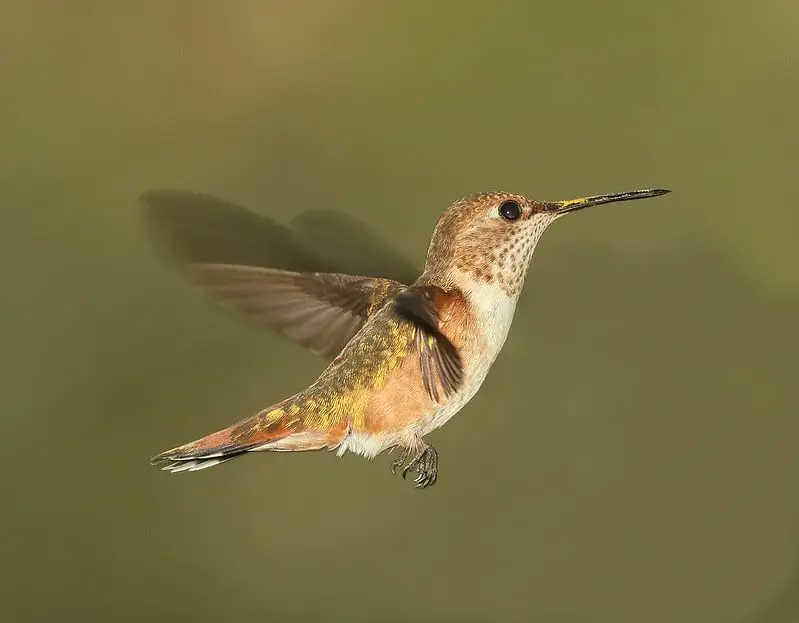
Fun Facts:
- Nectar from tubular plants is the main source of food for this bird.
- These birds are average sized for a hummingbird and weigh 2-5g.
The Rufous Hummingbird, unlike a lot of other species, is covered in different shades of orange colours.
Both sexes have these orange feathers, but male’s feathers tend to be more vibrant. These birds are known for being very aggressive to other hummingbirds, both in and out of their species.
They are so aggressive that there are males that have been seen chasing females away from food sources, even during the middle of the mating season.
These birds do not form breeding pairs and are solitary throughout the year, males will mate with multiple females if they are able to.
They have only been seen in Georgia in the months outside of their breeding season.
These sightings have primarily been to the south and south east of the state, with a small handful of sightings being in the central state.
These birds are happy to use bird feeders and will visit your garden for any opportunity of a food source.
You should be warned though, they can and will often chase away other hummingbirds that may be wanting to visit your garden.
5. Allen’s Hummingbird
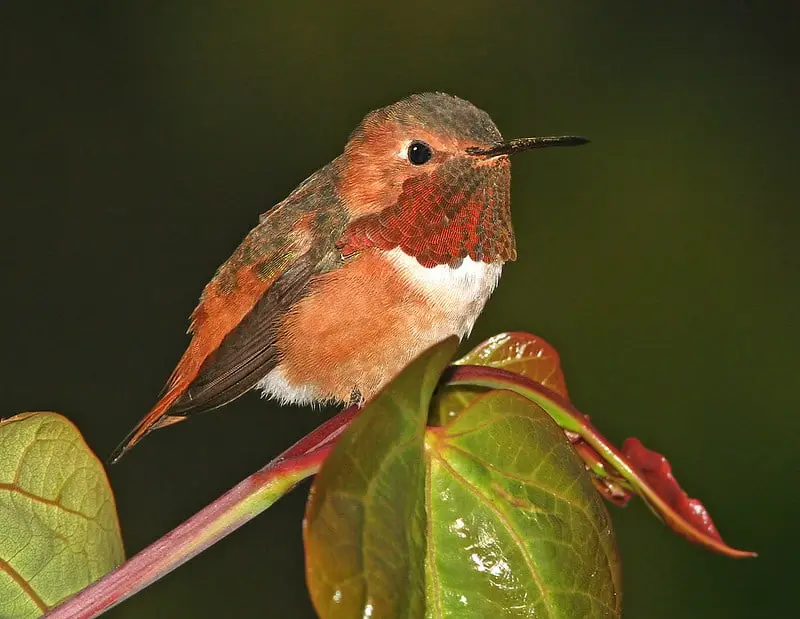
Fun Facts:
- A lot of this bird’s diet comes from nectar, but they will also eat small amounts of insects.
- They are similar in size to a lot of other hummingbirds, weighing 2-4g.
These hummingbirds are coppery in their colours with females usually sporting the duller shades.
You are most likely to see these birds in open areas of land, primarily areas that are close to coastal regions.
Allen’s Hummingbirds are not monogamous and do not form breeding pairs, males will try to court any females that enter their territory.
They will court from the same spot, a high up perch that they will choose soon after establishing their territory, this is where they will spend most of their time, observing their territory.
This bird is not as abundant as the other hummingbird species that we have looked at. They have only been spotted in the state of Georgia on rare occasions when it is believed to be a part of their migration.
These sightings have occurred to the north east of the state.
These birds have been observed visiting gardens and are happy to use sugar water feeders, they will usually do this in the winter months when food is scarce.
6. Calliope Hummingbird
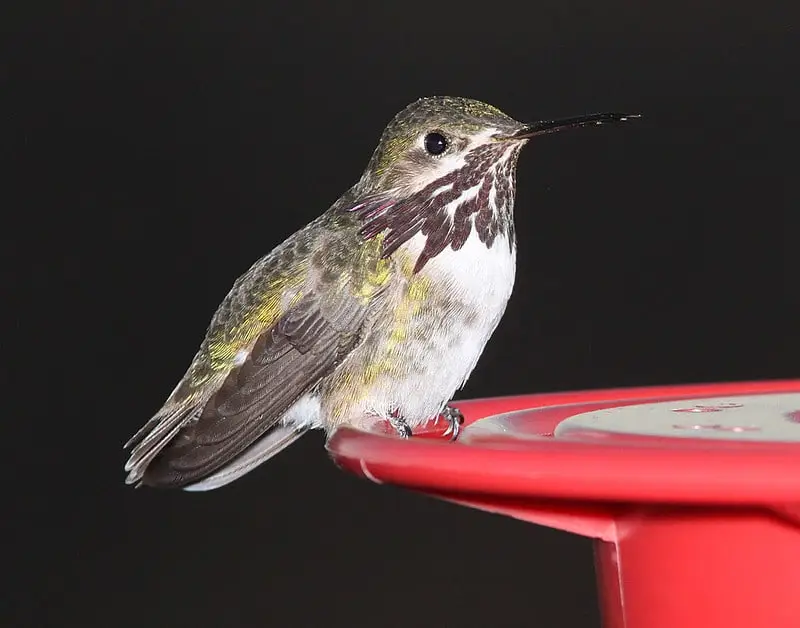
Fun Facts:
- These birds will consume nectar as their main food, usually from cupped flowers.
- Calliope Hummingbirds are on the smaller side only weighing 2.4-3.3g.
This species of hummingbird is found in open areas of land, such as meadows. Males are identifiable by the scattered purple feathers that can be seen through their white plumage and bellies.
These birds do not form breeding pairs and males will court as many females as possible.
They will try to court these females using a method that involves flapping their wings at such a rapid rate that it produces a sound like a bee buzzing.
Apart from courting, males will spend their time sat up on high perches, observing their territory and being ready to defend it from any approaching hummingbirds.
Sightings of this bird in the state of Georgia seem to be during their migration period.
They have been spotted in various areas across the state, but the most sightings have been recorded in the north or Georgia.
These birds have been seen using sugar water feeders in the wild, but they tend to stay in country areas and are not common garden visitors.
If you are very lucky and place some sugar water feeders out, you may get a visit from a Calliope Hummingbird.
7. Broad-billed Hummingbird
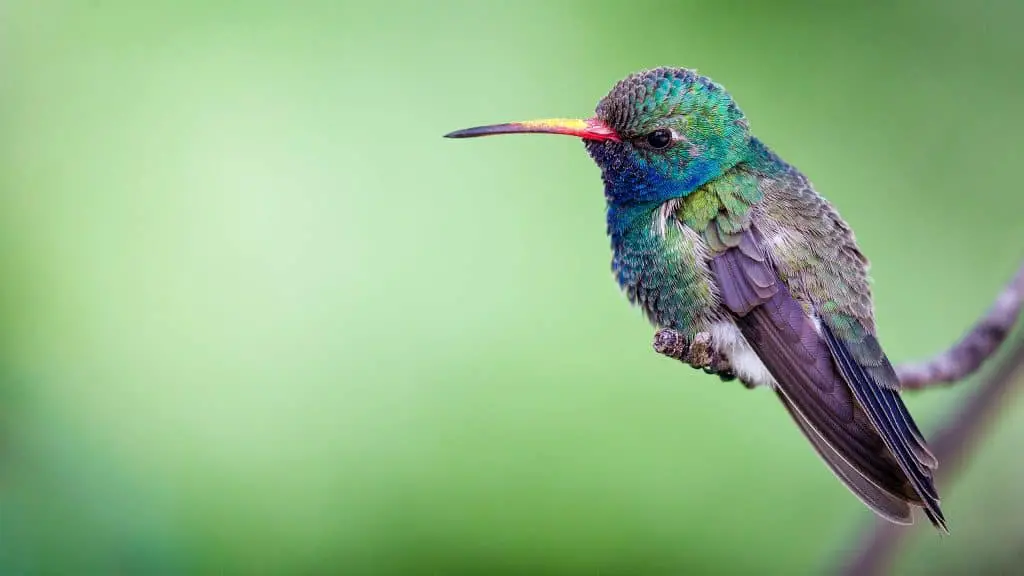
Fun Facts:
- Nectar is the primary food source for these birds but they will also eat insects that they find on plants.
- These birds are average for a hummingbird and have a weight range of 3-4g.
As well as being broad, the bills of this bird are long and bright red in colour.
Both sexes have blue and green feathers on their body, but the males are much brighter and iridescent compared to a female’s colours.
Like lots of other hummingbirds, males will spend lots of their time sat atop a high perch, observing their territory for intruding males or for possible mates.
Males are more likely to make their territories in open areas of land such as meadows or canyons.
There have been recorded instances of males performing the same courtship displays to other males and whilst there is not a confirmed reason, it is believed that it may be used as a warning display.
The range of this bird has not been as frequently documented as other hummingbird species, but they have been spotted in Georgia outside of their breeding seasons.
These sightings have been recorded in the south of the state.
These birds are not common garden visitors and tend to feed from flowers rather than manmade feeders, so adding tubular and cupped flowers to your garden may increase your chances.
8. Buff-bellied Hummingbird
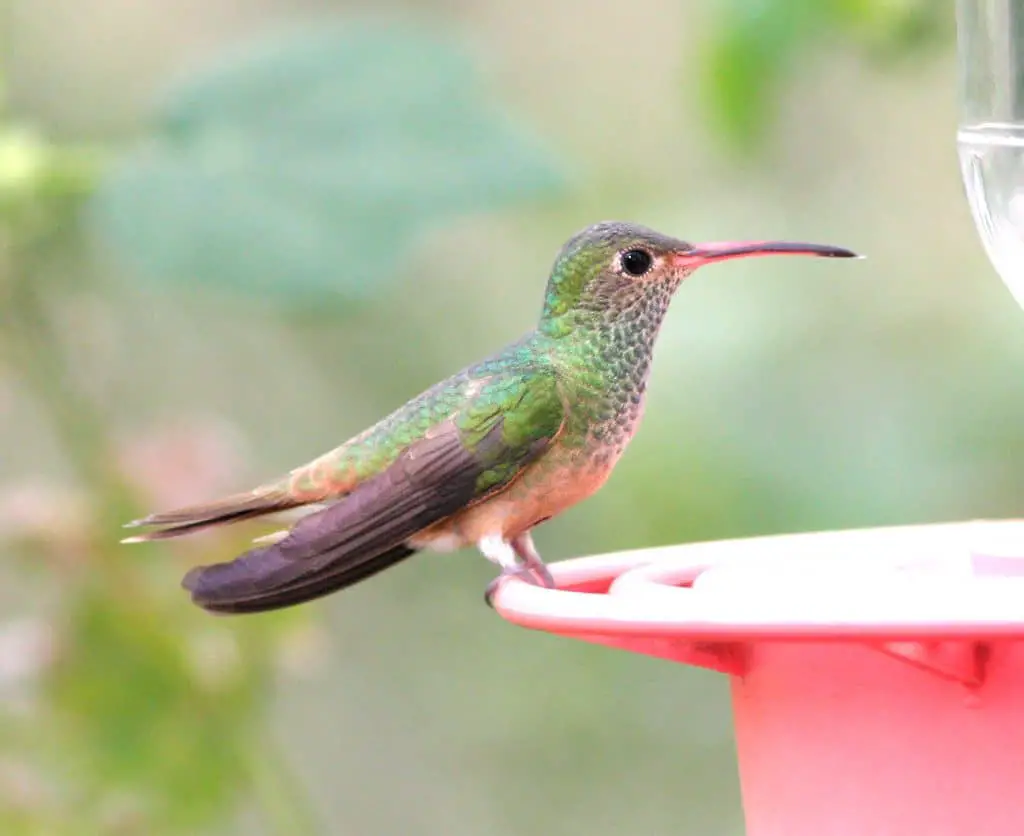
Fun Facts:
- The only thing known about their diet is that they consume nectar.
- These birds are average sized for hummingbirds and weigh between 2 and 4g. We do not know their average wing span.
The Buff-Bellied Hummingbird is not as well studied as other hummingbird species so not a lot is known about their behaviours.
You are most likely to see one of these birds in open areas of land, particularly areas that are close to woodlands.
Whilst their breeding and courtship behaviours have not been well-studied, it is known that these birds are not monogamous and do not form breeding pairs.
The females of this species make nests for the brood and raise them alone, males will mate with several females throughout the breeding season, if they are able to.
Recorded sightings of this bird in Georgia seem to be outside of the breeding season, and they are most prevalent in the winter months.
These sightings have been recorded primarily to the south and to the east of the state.
These birds do not tend to visit gardens but may be more likely to visit during the winter months, so make sure to keep your sugar water feeder stocked and freshly changed during these colder months.
9. Green-breasted Mango
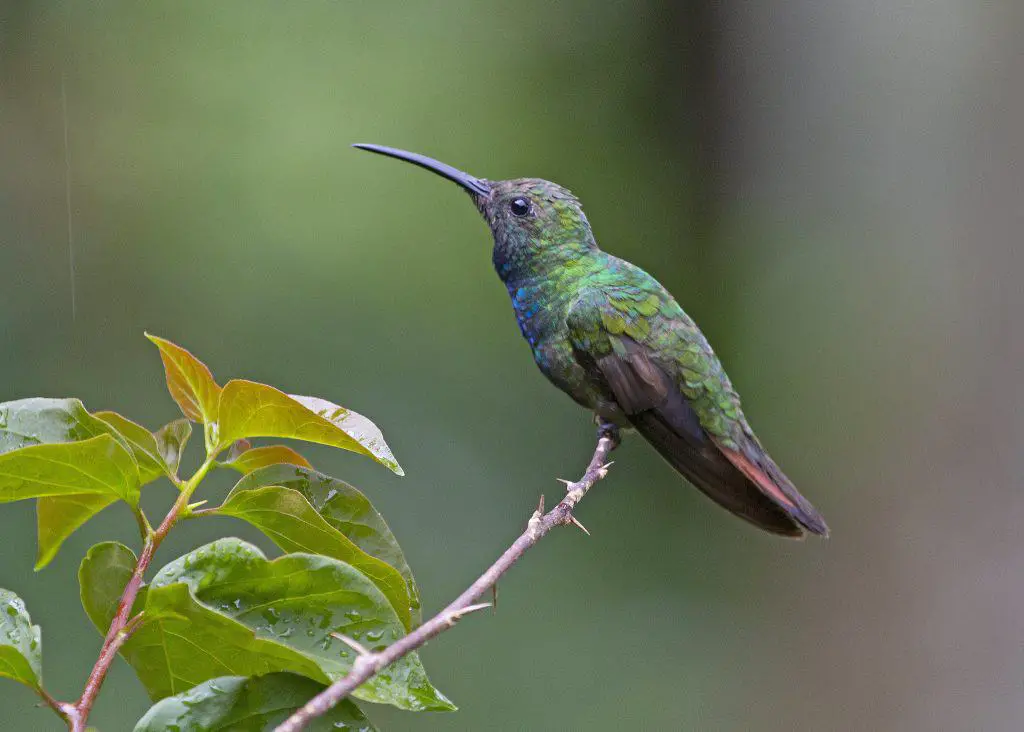
Fun Facts:
- These birds are on the larger side for a hummingbird, weighing an average of 7g.
- They primarily feed on nectar but will also eat insects.
You may have been able to guess from the name, but this hummingbird has a bright green plumage.
Males are very defensive of their territories and will spend most of their time observing their territory from a high up perch, ready to defend it from any other intruding hummingbirds.
Males will mate with multiple females if they can and they have been seen using their unique call, with the sound of tsup, to attract females into their territory.
These birds have been observed in Georgia outside of their breeding seasons and are not permanent residents of the state. The most common sightings of this bird occur in the south west of the state.
Green-breasted mangos are well adapted to using manmade feeders and so are quite easy to attract to your garden. All you will need is a sugar water feeder, do not add food colouring to it.

More Articles.
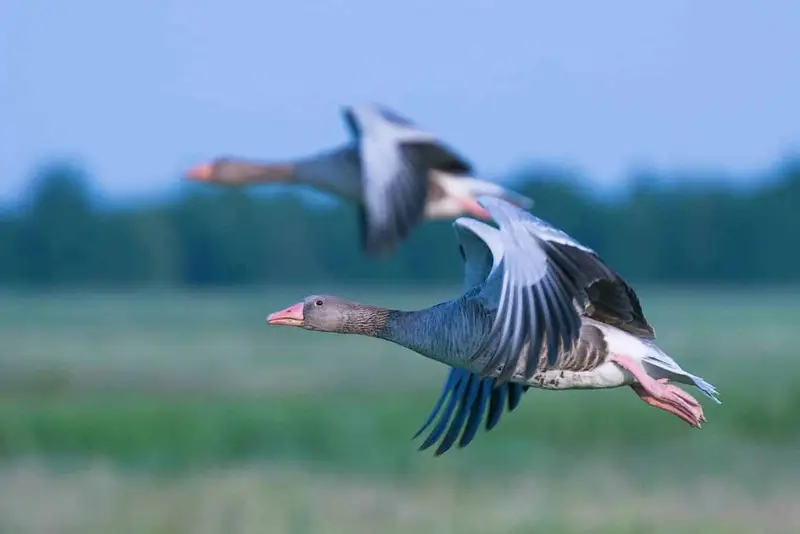
How to Attract Geese to Your Yard?
As far as birds go, geese get some fairly mixed reviews. These large birds aren’t

If you’re thinking about taking your child birdwatching, the most important thing is having equipment
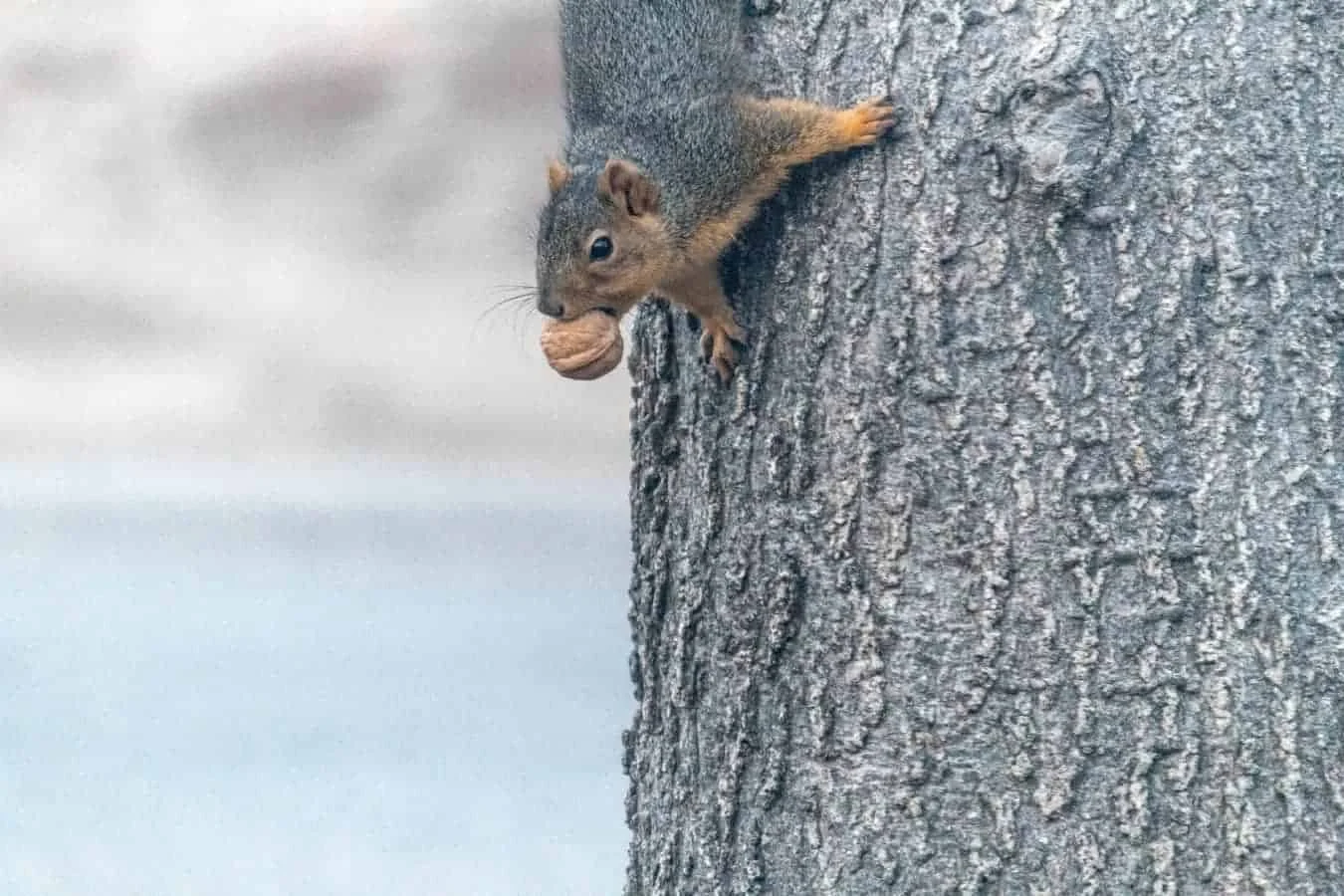
Best Squirrel Proof Feeder 2020
You want to attract and feed birds in your own backyard. You spent hours researching

About Us
We are avid bird-watchers who recently retired, allowing us more time to travel the world. Fortunately, we have managed to visit numerous countries around Europe, Asia, and America. Watching and photographing birds has been a passion for many years and we are making the most of the extra time on our hands!
